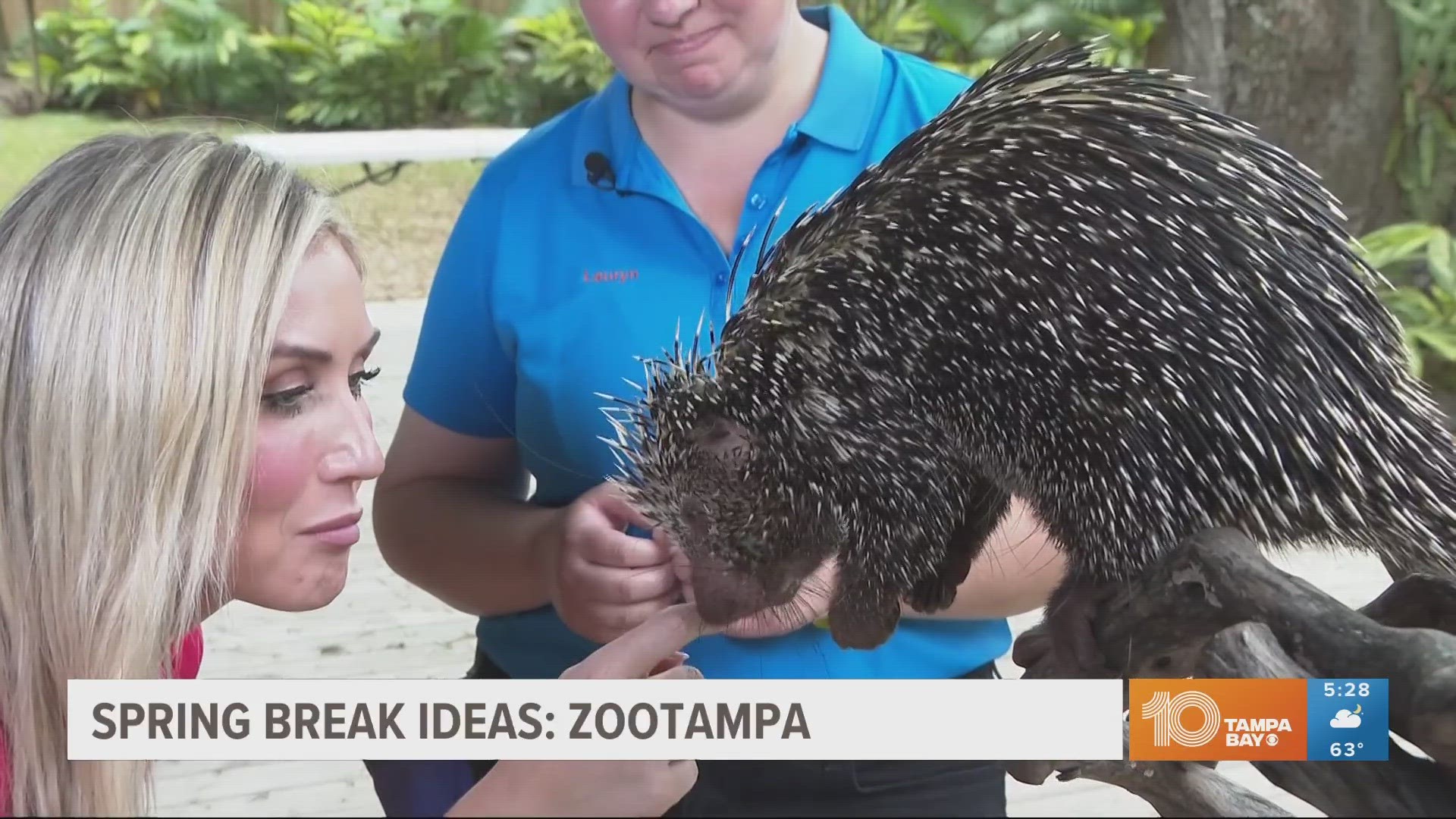TAMPA, Fla. — For anyone wanting to get a new pet but is sick of the normal typical animals – Florida residents can own specific wildlife with the right permits.
There is a list of animals that don't require permits like nonvenomous and unprotected reptiles or amphibians, hedgehogs, rats, moles, rabbits, squirrels, chipmunks, prairie dogs, chinchillas and much more.
But if you're looking for ways to make your family larger and want to adopt a giraffe or coyote – you might be in luck.
Here's a breakdown from the Florida Fish and Wildlife Conservation Commission of animals you can and can't have in the Sunshine State.
Class I Wildlife
This specific category of animals is considered to present a real or potential threat to human safety, according to FWC. Because of the nature and habits of the animals, they are not allowed to be owned as personal pets.
Animals in this category include:
- Cheetahs
- Cougars, panthers
- Jaguars
- Leopards
- Lions
- Snow leopards
- Tigers
- Crocodiles (except dwarf and Congo)
- Baboons
- Chimpanzees
- Gorillas
- Orangutans
- Bears
- Rhinoceros
- Elephants
- Hippopotamuses
- Cape buffalos
- Komodo dragons
- Hyenas
Click here to see a full list of animals in this category.
Class II Wildlife
The animals in this category are also considered to present a real or potential threat to human safety, but with the right license, they can be owned as personal pets.
"Substantial experience requirements and specific cage requirements must be met before a license will be issued," the agency explains on its website.
Animals in this category include:
- African golden cats
- Bobcats
- Clouded leopards
- Alligators
- Dwarf crocodiles
- Guereza monkeys
- Langurs
- Giraffes
- Howler monkeys
- African hunting dogs
- Coyotes
- Wolves
- Honey badgers
- Ostrich
Click here to see a full list of animals in this category.
Class III Wildlife
According to FWC, there is no formal list of species in this category because of the large number of species categorized as Class III.
Animals like exotic birds (parrots, parakeets, finches), small mammals (foxes, skunks, raccoons, lemurs), many reptile species (snakes, lizards, turtles, tortoises) and all amphibian species (frogs, salamanders, etc.) are included.
FWC also explains some species are considered domestic and are not considered Class III wildlife, like:
- Domestic cats and dogs
- Hamsters
- Guinea pigs
- Domestic rats and mice
- Cattle
- Horses
- Domestic pigs
- Poultry
- Peafowl
- Llamas
Venomous Reptiles
A license is required to own any venomous reptile, the FWC explains on its website.
This specific group includes "all reptiles in the families Elapidae, Crotalidae (reclassified as a subfamily under Viperidae), Viperidae, and Hydrophiidae; all reptiles in the genus Heloderma; and all reptiles in the family Colubridae belonging to the genera Rhabdophis, Boiga, Dispholidus, Thelatornis, and Atractapsis."
Any snakes in the family Hydrophiidae are prohibited and are not allowed for possession on a venomous reptile license.
For more information specifically about venomous reptiles, click here.
After you determined the type of wildlife you want to own, you can download the appropriate application for possession of that type of wildlife.
For Class II Wildlife, the license lasts for one year and costs $140. The license for venomous reptiles also lasts a year but costs $100. You need to be 18 or older to have one.
Licenses for Class III Wildlife last two years and is free to have. You need to be 16 or older to own a permit.
Click here to find applications.

